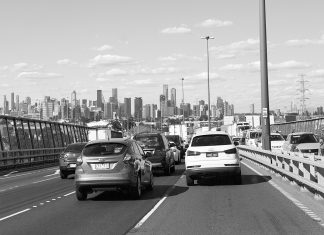The Australian high commissioner to Malta her excellency Julienne Hince visited the Maltese community in Morwell on Monday to hear about the upcoming Maltese museum, to be located next to the Maltese Community Centre.
Malta’s vice-consular representative for the Latrobe Valley and Maltese Community Centre president Mario Sammut said the high commissioner had asked to visit Morwell because “she had heard so much about the Maltese community here she wanted to come and visit us”.
“It was a huge surprise, [a] pleasant surprise. You don’t get visitors like that every day, do you?” he said.
The high commissioner’s visit coincided with the first day of works to the former Morwell Pigeon Racing Club building to convert it into a museum featuring different elements of Maltese culture and heritage.
“We were having the [Maltese] Festa and this person in Melbourne, he had a collection of miniature buildings that he donated to us to showcase at the Festa,” Mr Sammut said.
“But he didn’t want them back so we had to find somewhere to store them. So we had the building next door to the Maltese Community Centre, for a museum.
“It will be refurbished, inside [and] outside. By the time we are finished with it you won’t recognise it.”
The high commissioner to Malta, also the Australian ambassador to Tunisia, is half-way through her three-year posting.
“At the half-way point ambassadors generally come home to touch base with all the people they need to have a conversation with about the work we are doing in Malta,” she said.
“One of the community groups which, of course, is most important to me is the Maltese community in Australia.
“People to people links, the community links between Australia and Malta are strong. Almost everywhere I go, when people hear my voice, my accent, they tell me about their cousin, their brother, or that they themselves have lived in Australia.”
The high commissioner said the Morwell Maltese museum would recognise migration as the foundation for the strong ties between Malta and Australia.
“Although Australians were in Malta during both world wars, there are Anzacs buried in Malta who had been fighting in Gallipoli and other places in Europe,” she said.
“So migration is part of the story and in fact, the Maltese government would like to create an emigration museum so I’d like to talk to people about whether they have items they’d like to include in that.
“Migration is part of it, but it is not the whole story.”











